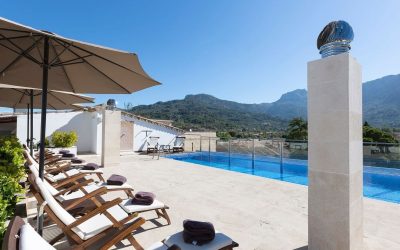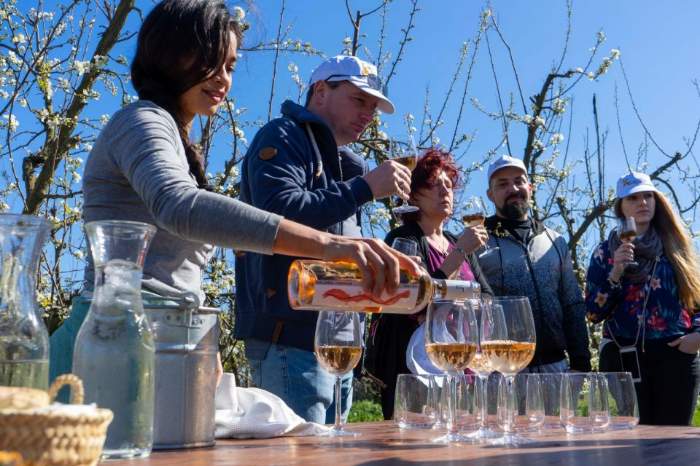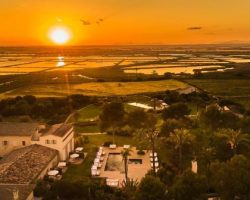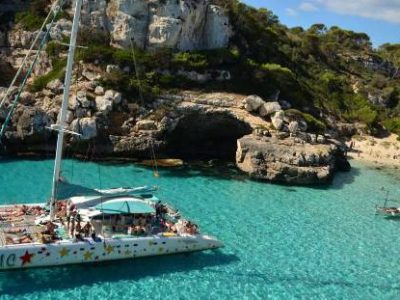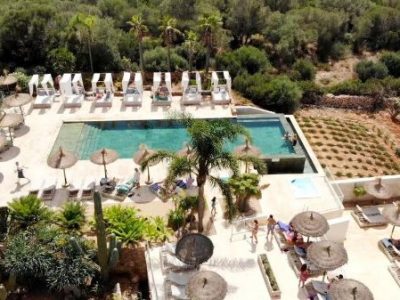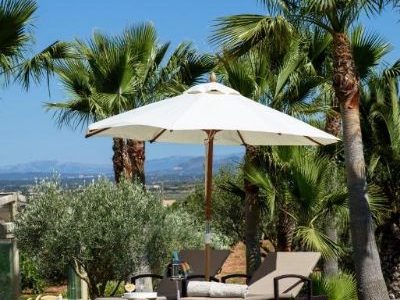All your holiday planning needs in one place, letting you book direct and benefit from official online rates
- Places To Go
- Things To Do
What’s Your Interest?
Traveling with kids
- Blog
Ses Salines, Mallorca, Things to do and see, hotels, market
Ses Salines – or Ses Salinas – is an area of Mallorca rich in history and diverse landscapes.
- This is where I want to go!
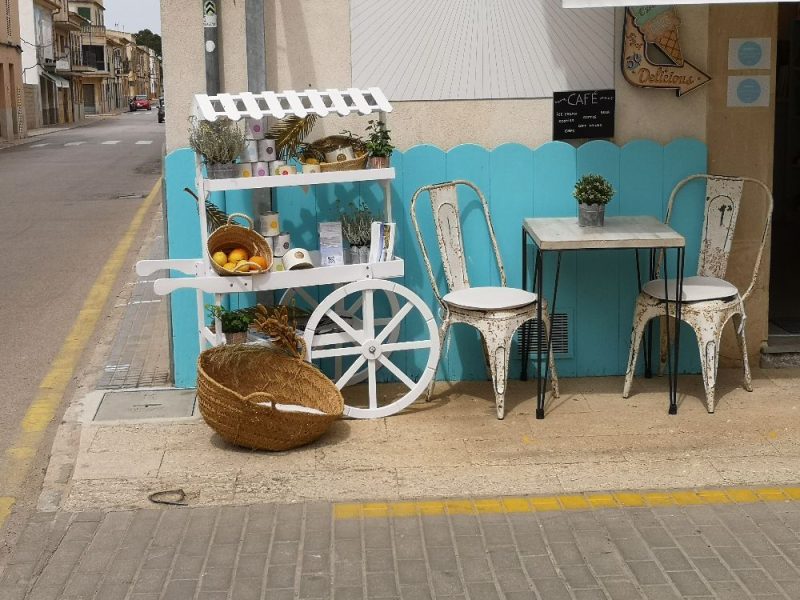
Why visit Ses Salines
Things to do in Ses Salines
Due to its fantastic location between the Tramuntana and the rural countryside, sports like walking, trekking and bicycling are some of the most obvious things to do in Binissalem.
VISIT THE SALT MINES AND FACTORY
This is what Ses Salines is all about, salt. When ancient Phoenicians and Romans were here, they knew exactly what richness the
EXCURSION TO ILLA DE SA CABRERA
FAQ
Ses Salines is a great place to stay, close to beaches and tranquil countryside. There are some fantastic accommodation options available for you.
Here are the best accommodation options in Ses Salines:
Ses Salines is located in the southeastern part of Mallorca, approx. 45 km (~28 miles) from Palma airport. The transfer time by car or taxi is about 30 minutes.
A taxi from the airport will cost about 55-60 euros.
If you prefer a more comfortable transfer, consider an air-conditioned private minibus transfer for about 115 euros. Book here
The weekly market in Ses Salines is held every Thursday morning in Plaça Major from 9 am to 1 pm.
Market and Events in Ses Salines
Weekly market in Ses Salines
The weekly market in Ses Salines is held every Thursday morning in Plaça Major from 9 am to 1 pm, or 9:00 – 13:00. The market offers a selection of local products, cloths, leather goods, crafts etc. It is a cute little marketplace which bring the locals together in a nice atmosphere. You will surely love to visit the market, and at the same time, enjoy a bit of sightseeing and a refreshment at one of the local bars.
Events and festivities in Ses Salines
January
Sant Antoti
On the evening of January 16th, Ses Salines celebrates the feast of Sant Antoni (Saint Anthony), the patron saint of domestic animals. In a traditionally rural area like Ses Salines where livestock has been part of the activities since the first human occupation, it is only natural that this celebration has a special place in the hearts of the locals. But this is also a party for you to come and enjoy! Being one of the most beloved Mallorcan traditions, the night of Sant Antoni also attracts a great lot of tourists who come to experience the many bonfires, fireworks and dancing devils in the streets.
Where: Ses Salines town
When: January 16th
April
Festes de Sant Jordi / Fira de Sal
Every year, towards the end of April, the patron saint of Colònia de Sant Jordi, Saint George, is celebrated with a great party in the village. For a wekk, the town will be full of fun and cultural activities and events for you to enjoy, for example exhibitions, photography contests, live concerts, dances, food stands and more.
Coinciding with the celebration is the annual salt and spices fair which pays homage to the main product of the area, salt. You can look forward to a big market and both spices, herbs, foods and crafts, but also, a lot of gastronomical experiences. Special dishes are served at extremely low prices during this week, all with a twist of the local salt.
Where: Colònia de Sant Jordi
When: End of April
May
Fira de Maig
One of the highlights of spring is the May fair in Ses Salines, which begins on May 1st and lasts for about three weeks. According to local tradition, the fair is always initiated with a great equestrian show on the 1st of May. The following weeks, multiple cultural events and activities are held throughout town such as exhibitions, concerts, shows, workshops, cooking shows and more. Every Sunday there will be a big market in town during this period.
Where: Ses Salines town
When: 1st of May
June
Sant Joan
Come and celebrate the night of Sant Joan in Colònia de Sant Jordi on June 23rd. Bonfires and lights illuminate the beautiful southern coastline of Mallorca, where demons and traditional figures from the regional folklore dance to the sounds of typical rhythms accompanied by an exciting audience.
Where: Colònia de Sant Jordi
When: June 23rd
August
Festes de Sant Bartomeu / Festa del Cavall
From the middle of August, Ses Salines celebrates its patron saint, Sant Bartomeu. Over the span of two weeks, the town will be full of games, competitions, exhibitions, sports, dances, concerts etc.
The main event during this festival is the Festa del Cavall, an impressive and fascinating horse show held on the last Saturday of August. The horse festival held on this day is the most deeply rooted on the island and well worth a visit. You will see the most amazing and fascinating horses doing pirouettes, jumps, acrobatics and parades, you ca not avoid being fascinated and a bit enthralled when you observe this majestic animal rise on two legs in front of you.
Where: Ses Salines town
When: Middle of August
October
Opportunities fair
During October, the stores of the area empty their stock and put it all on sale for discounted prices. This is a great opportunity to get some shopping done or find the perfect present for someone you love.
Where: Colònia de Sant Jordi
When: October

Support Local
Supporting local communities during your travels can have a profound impact. Stock up with groceries locally, stop in an artisan shop or enjoy a refreshment at a restaurant or bar. Now more than ever, these small businesses need support from travelers near and far.
Get to know the area of Ses Salines
Get to know the area of Ses Salines and its history
Ses Salines is a coastal municipality located in the south-eastern region of Mallorca called Migjorn. The area is particularly known for its salt extraction and the popular holiday resort of Colònia de Sant Jordi.
The name comes from the salt mines in the area of Colònia de Sant Jordi, which are believed to be the second oldest in the world.
History of Ses Salines
In this section, we will take you on a journey back in time so you will gain a better understanding of what kind of area Ses Salines is.
Talaiotic period
The first traces of human occupation within the present day municipal border of Ses Salines, dates from the Bronze Age. Our story begins in late part of the Bronze Ages, namely around 900 BC, when indigenous peoples built communities here and started their agricultural activities such as raising livestock.
One of the most fascinating periods of the Balearic prehistory, is the Talaiotic culture. A culture that was made by a mix of indigenous peoples, ancient Greeks and Phoenicians that occurred in the late Bronze Age about 1,200 BC and lasted until the Roman conquest in 123 BC. The name of this culture was given as the word “talaia” means “watchtower” or “lookout” in Catalan, and that was the over-shining characteristic of the mindset of the people of that time, their constructions became military oriented.
Explorers and colonizers from the ancient east traveled across the Mediterranean sea in search of land and metals. It was known that the lands of current day western Europe were rich on metals and minerals. In present day Girona, Catalonia, the ancient Greeks of Phocaea (present day Foça, Turkey) founded the city of Empúries in the late 5th century. The Phoenicians too was seeking to expand their territory and enhance their trade in the Mediterranean, they were particularly after the ore found in the Iberian Pyrite Belt (stretch between northwest Portugal and Sevilla). The Phoenicians established textile factories in most of their colonies, in which they had a predilection for islands and territories close to the sea, which again proves their trading activities.
On the islet of Na Guardis, east of Colònia de Sant Jordi, there are remains of an ancient Phoenician commercial factory and trading port probably dating from the 5th or 4th century BC. At the highest point of Na Guardis, remains of two rectangular constructions used for habitation gives a whole of a metallurgical center dedicated to the iron forging. Discoveries of tableware, amphorae and other household items gives more evidence to back the theories of a Phoenician trading center here that lasted until the 3rd century BC. In addition to the finding on the islet itself, a wreck of a Phoenician vessels have been found at the bottom of the sea close by.
With these things in mind, it is now easier to understand the life of the Talaiotic people in Mallorca, they were agrarians, producers, traders and warriors. The philosophy behind their constructions came from a defensive point of view, they needed to be guard of potential threats.
Another key aspect of the Talaiotic culture, was the Balearic foner, a deadly warrior known for his ability to sling projectiles. These warriors were part of the troops in the wars in Sicily and in the Punic Wars, fighting alongside elite soldiers of the Phoenician army against Romans. Hannibal has been cited to pay extra tribute to these warriors and to have demanded that they were given more protection than any other troop. The foners were deadly to their enemies, they could crush bones and break wood with their enormous power, distance and accuracy in their shots.
In Ses Salines, there are several remains of Talaiotic settlements, for example the Antigors, Na Mera, es Torrent and Mijà Gran. Especially the Talaiotic village of els Antigors is a significant discovery in Ses Salines, thus made a point of interest for tourists to come and visit. The site was excavated by famous Catalan architect Colominas back i the 1920’s when he was also leading the major project of excavating the Capocorb Vell in Llucmajor. The site exhibits and explains the general mindset of the Talaitotic peoples, a defensive walled fortification that protects the inner village. Inside the enclosure, there are remains of three talaiots (towers), with the main one called “Sa Talaia Joana” attached to the outer wall, which is considered to have been one of the highest and biggest in Mallorca. Other finds in this site include a sanctuary where probably the highest members of the community have met to discuss important matters and used the place for veneration of gods. There is also a so-called “sitjar”, a water storing room and several other minor constructions here that gives you the idea of how the village looked back during the 4th and 3rd centuries BC.
The Roman conquest of the Balearics
In 123 BC, Roman general Quintus Caecilius Metellus conquered the Balearic islands, a conquest that gave him the title of consul and the nickname “Balearicus”. Metellus was an experienced man of warm, however, he did not have many major accomplishments on his record, which is part of the reason that the conquest of the Balearic Islands came in a convenient time. The official reason for the conquest, was a strike against piracy in the Mediterranean, which truly was a part of it. But more importantly, it was strategic trading outpost, that gave the Romans more dominance in the region, and again, a safer journey when they traveled by naval routes.
Quintus Caecilius Metellus was well aware of his opponents and their capabilities to defend themselves from the shores. He had already been acquainted with the Balearic foners and knew these would cause him great loses. To counter the devastating shots of the foners, he strapped leather around his ships to function as a protective shield when the projectiles hit. This tactic allowed him to embark his troops close to the shoreline.
From then, the battle began against the indigenous people of Mallorca, who retrenched and barricaded themselves in the walled enclosures of the Talaiotic villages. It was a prolonged process of finding and fighting the tribes, however, when first found the resistance was not a match for the organized and skilled Roman troops.
The ancient site of Sa Carrotja is evidence of Roman occupation in Ses Salines, and a very important one. Especially the findings of Roman tombstones with inscriptions are noteworthy in Sa Carrotja, because they provide great knowledge about Roman epigraphy. Actually about 25% of all Roman inscriptions has been found in the local area of Ses Salines, and most of them from this ancient necropolis. Some of the tombstones are current exhibited in the regional museum of Ártà. In addition to the Roman necropolis, findings of ceramics, amphorae, glass, bones, metals and coins in the surrounding area of Sa Carrotja gives archaeologists and ethnologists reason to believe that the entire Roman site could have covered a surface of more than 120,000 m2.
A return to the excavation works of Colomnias from the Talaiotic village of els Antigors outside Ses Salines, we will also find a note about the “Roman chamber” in one of the Talaiotic constructions. Just like the Phoenicians, the Romans too were very engaged in the extraction of salt which was of great value to them.
The Moorish period
In the year 902, Moorish general Iṣām al-Ḫawlānī conquered the Balearic archipelago and incorporated it into the Emirate of Cordoba. Following the campaign, he was named first valí (governor) of the islands by the Umayyad emir. He established the capital of Madina Mayurqa, installed baths, mosques and erected the Almudaina palace. With the Moorish occupation of the island, Mallorca was introduced to a fiscal system for the first time.
The island was divided in twelve different administrative regions, whereof Ses Salines came under the one called Manaqur, which also comprised the present day municipalities of Manacor, Sant Llorenç des Cardassar, Felanitx, Santanyí, Campos and Porreres.
The area in which Ses Salines is located today, was known as a farmhouse called Jussana. The Moors lived in kindred clans, typically in farmsteads or smaller sheds, living of agricultural activities including raising livestock and cultivating dry lands.
The Catalan-Aragonese conquest
Following the Catalan-Aragonese conquest led by King Jaume I of Aragón “the Conqueror”, the lands of Mallorca was given to high standing people of the church, knights and counts, all participators or supporters of the conquest. The area of Ses Salines was kept by the king himself.
To repopulate the area and start earning taxes, King Jaume parted and sold the lands of the area to knights.
The town of Ses Salines
The town started to develop from the two properties of Ca’n Bonico and Sa Carrotja. During the
The parish church was erected in 1664, but the current one replaced the old in 1912.
Colónia de Sant Jordi
Towards the end of the 19th century, things were not great in Mallorca, emigration and famine were considerable threats to the communities and so to try and alleviate this, the government came up with an idea of creating agricultural colonies on the island. Under the Law of Population, the marquis of es Palmer bought the lands from the state in 1879 and founded an agricultural colony. At that time, this was the old port of Campos and the village consisted of a group of small houses belonging to the fishermen.
The law allowed the marquis to convert unexploited soil to groves and plantations without costs, and, gained considerable tax exemptions. In total, nine colonies were founded in Mallorca in the period between 1874 and 1891, however, only four of them are left; Colònia de Sant Jordí, Colònia de Sant Pere, Portocolom and Porto Cristo. With the rumors of the new colony unfolding rapidly soon spread throughout the island, and people came from many areas to settle here in hope of becoming successful colonists.
In 1924, a Franciscan convent was actually erected here. However, with the introduction of mass tourism after the war, Colònia de Sant jordi soon turned from a community to a place of tourism accommodation.
Practical Info
Useful Numbers
Emergency: 112
National police: 091
Local police: 092
Guarda civil: 062
Fire: 080
Maritime emergencies: 900 202 202
Town Hall: +34 971 88 65 58
Public Transport
Bus lines: 303
Power Supply
220V

